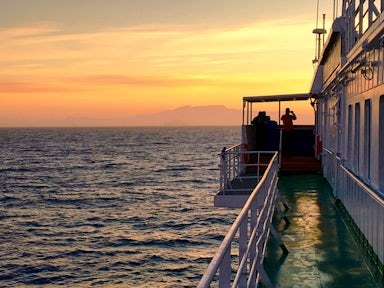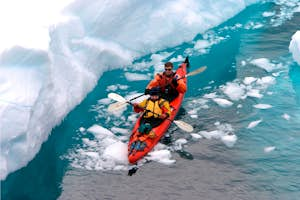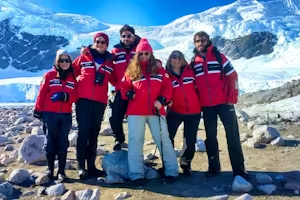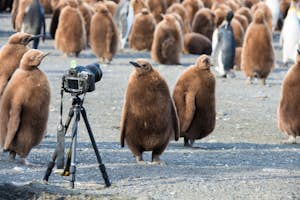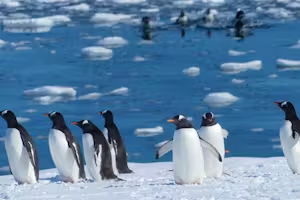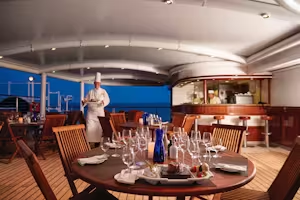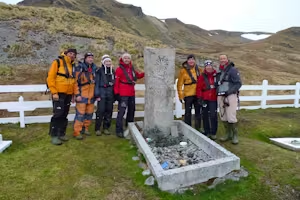Biosecurity & Antarctic photography
In light of the arrival of Avian Flu into South Georgia in October 2023 and into Antarctica in February 2024, protective biosecurity measures that have been in place for the past two seasons will continue to be maintained moving forward. We invite you to join us in adhering to the guidelines of IAATO (The International Association of Antarctic Tour Operators), designed to protect Antarctic wildlife. Please familiarise yourself with the current biosecurity measures and respect them when photographing during your adventure.
Specific biosecurity measures include cleaning and vacuuming your gear, disinfecting boots and camera tripods and maintaining a strict minimum distance of 5 metres / 16 feet from wildlife. Visitors must avoiding lying down, crouching, squatting or kneeling to rest or take photos. You must also make sure any possessions such as bags, jackets or cameras do not touch the ground.
Top tips for Antarctic photography
Since this video guide was created, heightened biosecurity measure have come into effect. Contrary to some of the video, kneeling, crouching and squatting down is no longer permitted during onshore excursions.
Choosing the right camera
Generally speaking, bringing a DSLR (Digital Single-Lens Reflex) is the best option as this will give you the best image quality and lens options. However, if you are just after holiday snaps then a simple point-and-shoot camera is a great option.
DSLR
DSLR cameras are by far the most common type of camera used in Antarctica. The image quality of a DSLR outstrips most other camera types and you get far more creative options thanks to the lens choice and settings.
Pros:
- Image quality and resolution is optimal
- Images can be printed out in large formats at home
- More creative settings to choose from such as aperture, shutter speed and ISO (a camera setting that will brighten or darken a photo)
- Interchangeable lenses allow you to choose which lens is right depending on the situation
- Easy auto mode for beginners
Cons:
- Not the cheapest option
- Heavier than some compact cameras
- You’ll probably want to purchase several lenses
- JPG and RAW image files can be quite big
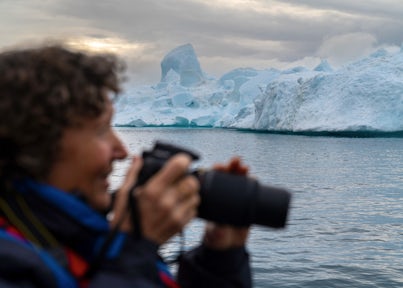
Shooting ice in Antarctica
Point & shoot cameras
Whilst DSLR cameras are by far the most popular option, point and shoot cameras always have their place. If you just want some snaps to remember the adventure, then a point-and-shoot might be the way to go.
Pros:
- Very easy to use
- Quite versatile if you get a decent zoom lens model
- Very lightweight and small - just chuck it in your pocket
- Often cheaper than a DSLR
Cons:
- Image quality is not quite as good
- Not many creative choices
- Not as rugged as a DSLR

Photographing whales from a zodiac boat
Weather sealed options
On an Antarctic cruise, you're going to have to protect your camera from the elements – snow, rain and spray – while you're out on deck or in a rubber zodiac vessel. With this in mind, you could look at getting a camera that has 'weather sealing'.
This usually means that the joints and buttons will be covered and sealed with rubber to reduce exposure to moisture and dust, however, this does not make the camera waterproof. High-end DSLRs shine through in this respect as their weather sealing will be exceptional.
Therefore you could also think about purchasing a rain sleeve. This is not the most technical piece of kit - it’s basically a plastic bag for your camera. It should only cost you around £8/$10.
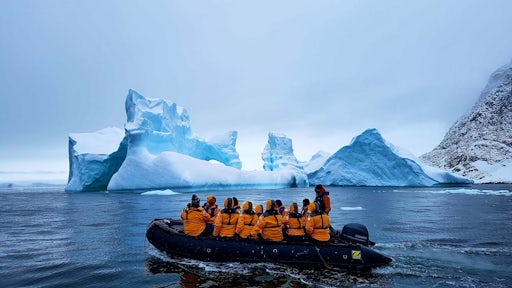
Exploring by zodiac
Choosing the right lens
As Antarctica offers both breathtaking landscapes and rich wildlife, bringing both a wide-angle lens and a telephoto zoom lens is advised.
Telephoto lenses
For most wildlife photographers, telephoto lenses are the go-to choice. However, unlike most places on our planet, the wildlife in Antarctica is neither shy nor scared of humans, and in many cases is actively curious. Penguins will often waddle past you (often requiring you to move back to maintain the mandatory 5 metre distance) and seals barely look up at you when you approach them at a safe distance.
This behaviour means that long telephoto lenses are not as critical as they might be in other places. It is still advised to bring a telephoto lens, particularly for photographing whales, but a 400mm lens will usually suffice and help to keep the weight down in your luggage.
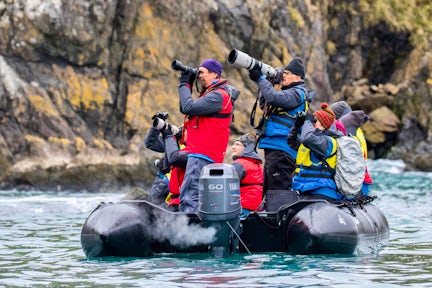
Pros:
- Capture wildlife that is not close to you, such as whales
- Compresses wildlife and landscape together
- Ideal for portrait images of seals and penguins
Cons:
- Heavy and bulky when transporting
- Not required for penguin and seal images on land
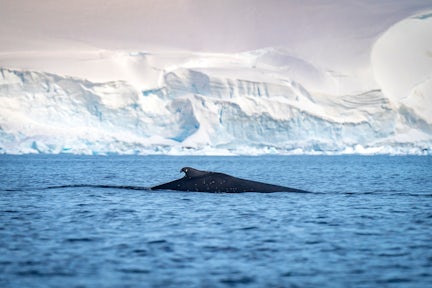
Wide-angle lenses
Wide-angle lenses often produce the most interesting wildlife photos in Antarctica. This is because they are great at capturing both the wildlife and breadth of landscape in a single image.
You’ll be taking daily shore hikes and wide-angle lenses are lightweight and easy to carry. They also allow you to capture the enormity of the Antarctic landscape and demonstrate the sheer scale of the environment you are standing in.
A wide-angle lens such as a standard 16-35mm F4 is more than good enough to get great wildlife shots of penguins whilst ashore. In fact, curious whales will often appear next to zodiacs and a wide-angle lens is the only option when this happens.
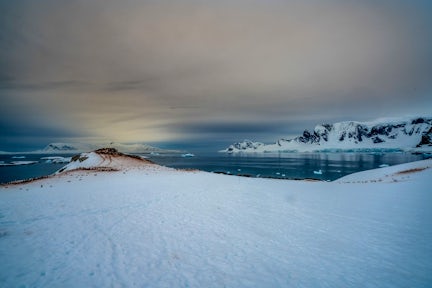
Pros:
- Great for capturing the wide-open landscape of Antarctica
- Can demonstrate both the landscape and wildlife in one image
- Can often produce more intimate wildlife shots
- Easy to carry and pack
Cons:
- Not good at capturing detailed wildlife images
- Frustrating when wildlife appears in the distance
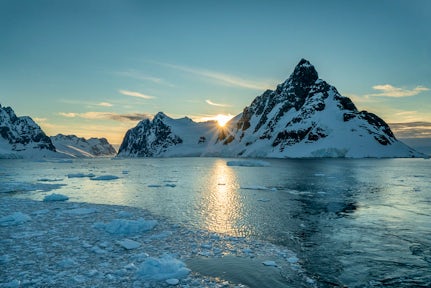
Do I need to bring a tripod?
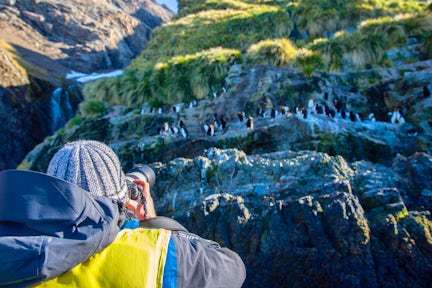
Please note that tripods are not currently permitted to be used on the island of South Georgia. However, it is possible to use one in Antarctica if you wish. Regarding whether a tripod is recommended - this is a tricky one, as you will spend a lot of your time on a moving ship or zodiac. However, if you want to capture stunning HDR landscapes while on land, or take a timelapse, a tripod will be useful. They can also be great for achieving things like motion blur on the water, which can have stunning results.
If your focus is purely wildlife then a tripod is not really necessary. The bright snow means that your shutter speed will be fast and, unless you’re trying something very creative, a tripod won’t be useful.
However, bringing a monopod may be a good idea, particularly if you know you’ll be doing a lot of wildlife photography. Many people complain of tired arms when using telephoto lenses for long periods and a good monopod will alleviate this problem instantly. Monopods are also great when photographing sea birds from the ship's deck as they can be moved around easily.
If you do decide to bring a tripod or monopod this must be thoroughly scrubbed, cleaned and disinfected at the same time as your boots as part of the biosecurity when returning from a landing in Antarctica.
What extra gear will I need?
Extra batteries and memory cards
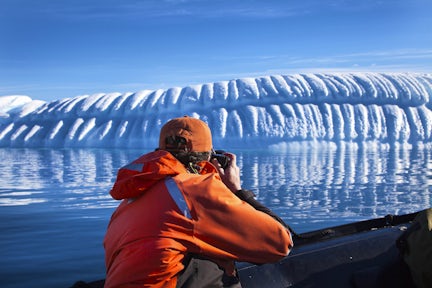
It goes without saying that Antarctica is a cold environment. Even in summer, temperatures are regularly below freezing, especially if you travel in the shoulder months of November and March. It becomes evident very quickly just how much shorter batteries last in the cold environment.
If you can, bring extra batteries and try to keep the charged batteries close to your skin during the day to stop them from draining power.
You should also consider bringing extra memory cards. Not only do memory cards frequently malfunction, but if you have an epic wildlife encounter, you’ll take a lot more pictures than you expect. You really do not want to run out of memory just when humpback whales are surfacing next to your zodiac.
You may also want to bring a USB stick or hard drive to keep in your cabin so that you can back up your photos as you go or share photos with other passengers whilst on board.
Dry bags
Condensation in the cold weather can be a big problem and quite a shock to first-timers. When there is a quick change in temperature, the front of your lens can often fog up with condensation. This frequently happens when you take pictures outside of the ship and then bring your camera inside.
To combat this you should put the camera in an air-tight bag before coming back inside. This allows the camera to slowly adjust to the new temperature and prevents condensation from forming.
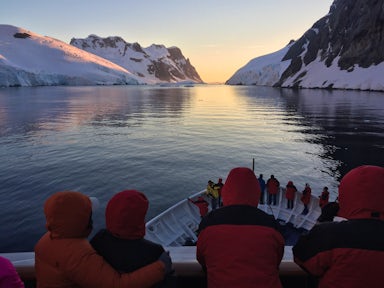
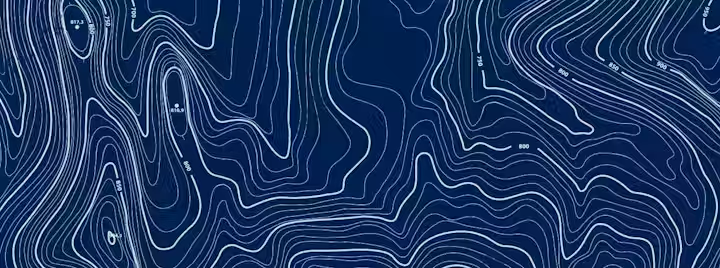
Swoop says
You should also bring air-tight bags or dry bags for the zodiac trips. The sea is often choppy in the zodiacs and it is not uncommon to get a good dose of seaspray over you and your camera.
Filters
Seeing as so much of the landscape in Antarctica is white, having a filter for your lens is important. One of the biggest issues with photographs of Antarctica is that they end up over-exposed, so an ND (Neutral-Density) filter would be perfect to avoid this. They reduce the amount of light entering the lens, and so should help you avoid over-exposing your photos.
Polarising filters are also useful for darkening skies or removing glare from the sun on the sea or the snow, which is incredibly useful if you're on a boat surrounded by icebergs.
You should be able to pick up both of these for a reasonable price. They are light too, so easy to pack.
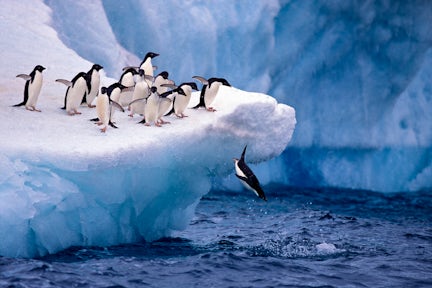
Adelie penguins on an iceberg
Thin insulation gloves
If you’re planning on taking a lot of pictures, then it is definitely worth purchasing a pair of thin purpose-made photography gloves to sit under your outer gloves. These are perfect for keeping your hands warm whilst still being able to change the settings on your camera.
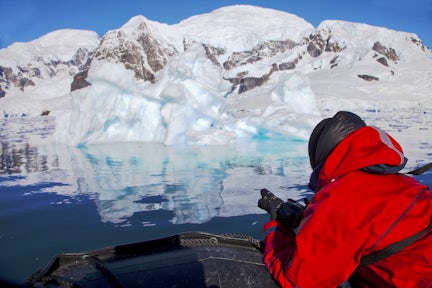
© Ira Meyer

Swoop says
It's all too easy to spend your time seeing only 1cm square of what is going on, and missing some incredible drama kicking off nearby, or be so absorbed in getting the perfect shot, you forget to just soak it all up. Don't forget to put your camera down and enjoy the moment!
What our customers think of photography in Antarctica
GoPros & drones
GoPros
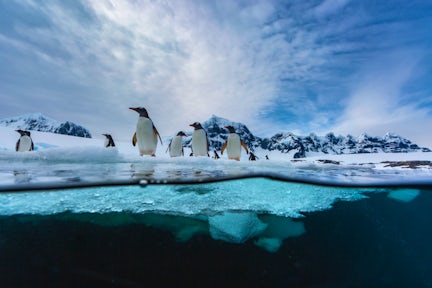
Gentoo penguins heading out to sea
GoPro cameras can be great fun. As well as a funky time-lapse feature, they are able to film and take pictures above and below the waterline, so filming humpbacks swimming under your zodiac is a real possibility. It’s a good idea to invest in some of the cool accessories, like the selfie stick and clamps, and have some fun experimenting with the various camera functions.
We suggest you get some practice using your GoPro before going on your trip, as it can take some learning (especially the ones without an LCD screen on the back) and you don’t want to be spending time pushing the wrong button when that penguin is staring in the lens.
If you will be kayaking during your trip then we definitely recommend bringing a GoPro as you’ll be able to film your adventures and sightings both above and below water.
We recommend that you give your camera a thorough clean and rinse off when you get back on the ship.

Swoop says
We advise taking a GoPro stick with a wrist strap. You wouldn’t want it to end up at the bottom of the ocean!
Can I bring a drone?
Unfortunately, you can’t take your drone to Antarctica.
IAATO (International Association Antarctic Tour Operators), the governing body for Antarctic tourism, which aims to keep Antarctica as pristine and untouched as possible, has ruled against the use of drones. Drones are considered to be at high risk of getting lost and as such are not allowed to be taken to Antarctica. Besides that, the noise can be disturbing to your fellow passengers.
If you're spending time in Patagonia before or after your voyage, bear in mind that drone use is often restricted in national parks such as Torres del Paine and Los Glaciares. Special permits are required and approval can be challenging to obtain. Drones can disturb wildlife and disrupt the experience for other travellers. Also, Patagonia is known for strong winds, which can make drone flights difficult or unsafe.
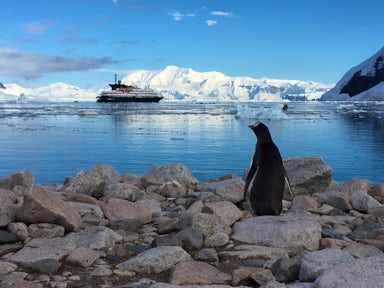

Swoop says
Get somebody to take some pictures of you and do the same for your fellow passengers. Selfies really don’t capture the incredible scale of Antarctica! If you get a good shot of another passenger, let them know and get their email, so you can share it when you get home.
Ten photography tips to get the most out of your Antarctica trip
Join Swoop Antarctica's videographer, photographer and Antarctic expert, Burnham, for this blog article where he offers up his best 10 tips for getting the most out of your Antarctic photography.
Top tips for photographing in Antarctica
Demonstrate scale
Antarctica is an incredibly vast landscape, but it’s often difficult to convey this to people who have not been there. The best way to do this is to show a subject in the photo that people would recognise. For example, having some kayaks or a ship in the composition will help to give people some perspective as to just how immense the landscape really is.
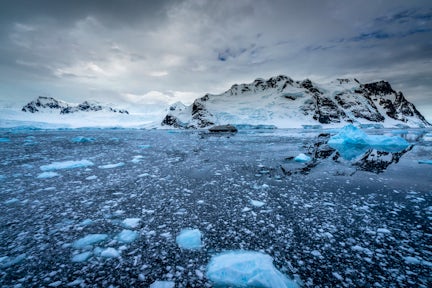
The dreaded grey snow effect
The huge amounts of snow in Antarctica mean that your camera’s auto settings and histogram will underexpose your photos and leave you with landscape images covered in grey snow.
To avoid this you can either over-expose your photos or set your exposure compensation to +1 or +2. Just remember, do not trust your camera’s light meter in these conditions as the snow will play havoc with them.
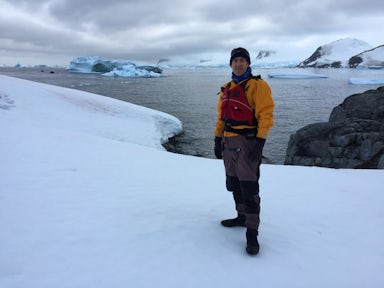
Get your camera low down
Getting the camera closer to the ground helps to create more intimate photos. The penguins will pop out against the background far more this way and create a stronger connection between the animal and the human when viewing the photos.
However, please be careful not to kneel or lie down, or allow your camera or strap to touch the ground as this is not permitted for biosecurity reasons. Squatting and crouching are also not permitted, as it's all too easy to slip over on the ice, wobble in a wind gust or get caught out by putting one hand or a knee down to support yourself when standing back up. As well as being necessary to maintain good biosecurity, it also stops you getting guano on your hand as the penguins are fairly prolific producers - beware the pink snow!
Therefore, the best way to get a lower perspective is by bending forward from the hips, which will change the angle of your shot. It helps if your camera has a moveable/flip-up style screen so you can check your subject is in the frame.
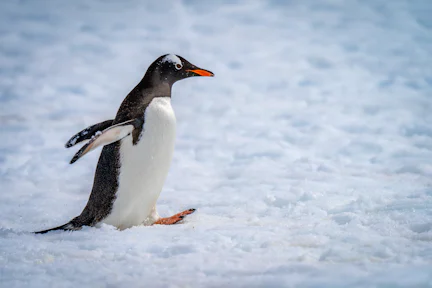
Be respectful of the wildlife
This is the golden rule of wildlife watching and photographing in Antarctica. As the wildlife in Antarctica is unafraid of humans, there can be a tendency to get too close to the wildlife - or for wildlife to get too close to you!
If a penguin approaches you, move slowly and quietly out of its path, to maintain the 5 metre / 16 foot distance as per IAATO regulations for interactions with Antarctic birds.
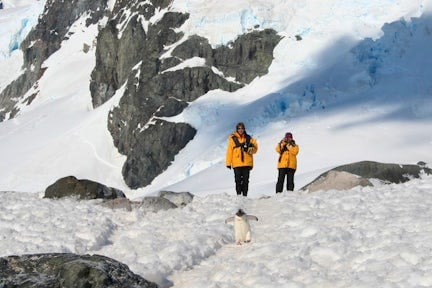
Get familiar with your gear
Don’t bring a brand new camera that you’ve never tried at home. If you are bringing a brand new camera, bring the manual! The onboard photographer can try to help but there are hundreds of camera types and having the manual can help them to help you if needed.
The onboard photographer will generally run a lecture in the early days of the trip, which is fantastically helpful for providing tips on how to make the most of working with Polar conditions. Also, many of the general expedition team are very experienced photographers and may be able to help out.
